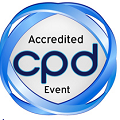
Karl R Aigner
Medias Klinikum GmbH & Co KG, Germany
Title: High intra-arterial drug exposure for advanced head and neck cancer patients
Biography
Biography: Karl R Aigner
Abstract
Introduction: Standard treatment for tumors of the head and neck are radiochemotherapy and surgery. In far, advanced orrnrecurrent cases surgery may be impossible or mutilating and side-effects from irradiation in terms of nerve damage and mouthrndryness are not reversible. In order to avoid toxicity and permanent tissue and nerve damage, we performed a study withrncarotid artery infusion and chemofiltration for simultaneous detoxification.rnMaterial & Methods: Carotid artery infusion was accomplished either via angiographic catheters in Seldinger’s technique orrnby means of end-to-side implantation of Jet Port Allround catheters into one or two carotid arteries respectively. Intra-arterialrninfusion time of a three-drug combination consisting of Cisplatin, Adriamycin and Mitomycin in 7 to 10 minutes short termrninfusions generates local drug levels eighty- to hundred-fold higher than during systemic chemotherapy. A total of 26 patientsrnwere included in the study, 18 patients in clinical stage IV, 5 in stage III and 3 in stage II respectively. For follow-up control andrndetermination of adverse effects, blood work (hemoglobine, white blood count, platelets, cardiac, kidney and liver enzymes),rnperformance scale, pain score, survival rate, hospitalization and side-effects were noted.rnResults: Five out of 26 patients died from their disease, one after a car accident. The average follow-up time was 45 months.rnStage IV patients who died had an average survival time of 11 months after onset of therapy. Surviving patients have notrnreached the median survival rate yet and are still alive on an average of 43 months after onset of therapy. There was no relevantrnhematologic toxicity (WHO Grade I – II) and there was no neurotoxicity. Vital parameters such as the ability to speak orrnto swallow usually improved after the second or third out of five treatment cycles. The major surgical complication was therndissection of the carotid artery in three cases.rnConclusion: Regional chemotherapy for advanced cancers of the head and neck area in terms of intra-arterial infusion withrnchemofiltration induces rapid tumor shrinkage without relevant toxicity and substantially improves quality of life.

